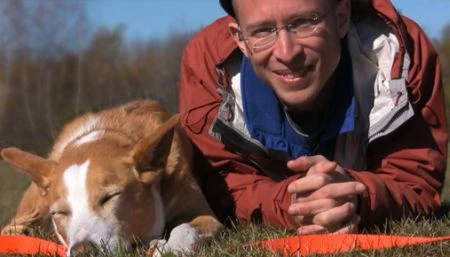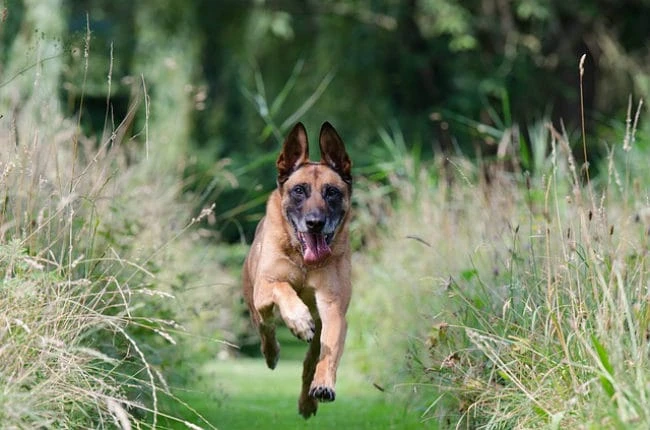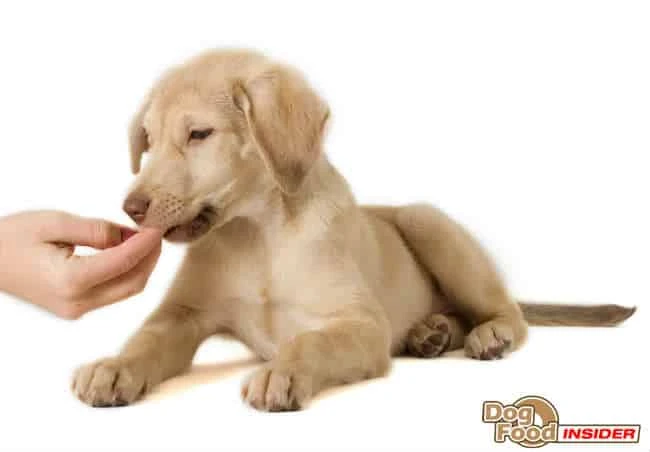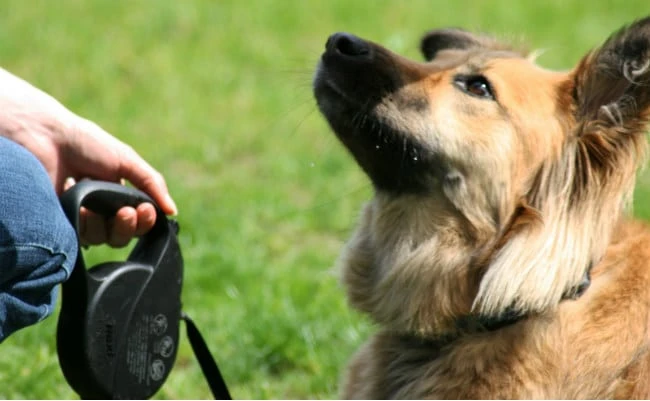Dog Training Interview Neil Sattin Natural Dog Training Expert

Top Natural Dog Training Expert Neil Sattin
Today we are interviewing Neil Sattin who is one of the nations leading experts on Natural Dog Training. Neil has recently produced an excellent set of DVDs which you can find out about below. Here is Neil’s ethos in relation to Natural Dog Training…
“Natural Dog Training taps into our dogs’ deepest instincts and lets us see the world through their eyes, or, more accurately, feel the world through their hearts.”
– Neil Sattin
Hi Neil thanks for taking the time to answer some of our readers most common questions.
Sure, it’s my pleasure.
Q1 Neil could you go into a little more detail regarding what you mean by natural dog training? How does it work and what method’s and techniques you use. How successful is natural dog training compared to other dog training techniques?
The way that I train dogs is based on creating greater and greater attraction and connection between dog and owner. Natural Dog Training is all about tapping into a dog’s emotional awareness of the world, and teaching your dog that you are uniquely capable of helping them resolve their emotional energy, and stress. While it works with all dogs (at least it’s worked with all the dogs I’ve met so far), it is particularly effective in helping hyper dogs settle down, teaching dogs how to come when called under ALL circumstances, and overcoming problem behaviors like aggression and separation anxiety.
As your dog is out interacting with the world, various things in their environment are stimulating them, getting their emotional engine revving. That could be a ham sandwich on the sidewalk, your neighbor’s cat, a squirrel, the mailman – basically all of those things stir up your dog’s emotional energy. And the way that Nature has designed our dogs to DEAL with that energy is for them to find something prey-like and chase it. And, conversely, to be repelled by things that they perceive to be like predators. So as your dog gets all energized, they are literally MORE attracted to all of those things that I mentioned (sandwich, cat, squirrel, etc.) and LESS attracted to you (since most people represent something much more predator-like in their dog’s eyes, being upright, having big teeth, big eyes, and generally being the – harsh – voice of discipline).
If you’ve ever had the experience where you see your dog being enticed by something else, and you call your dog to “come” – only to have your dog look at you like “yeah, right!” and take off in the other direction after that thing, then you’ve seen exactly what I’m talking about in action.
Of course, it’s those energized, emotionally intense moments when we MOST want our dogs to listen to us, right? So the goal, with the way that I teach you to work with your dog, is to get your dog feeling comfortable resolving that energy with YOU at higher and higher levels of energy. And then to teach obedience in the CONTEXT of being all revved up.
So even if your dog is completely energized by the presence of the neighbor’s cat, when they hear you yell “come” it actually makes sense to them. And then, because your dog has experienced being all revved up and satisfying their desires with YOU, you will actually be more attractive to your dog than the neighbor’s cat (or whatever other trigger you’ve encountered).
I tell people that they want to “Be the Moose” in their dog’s life. Let’s say that you’re walking through the woods with a group of friends, and your dogs, and you come upon a clearing – and there, in the center of the clearing, is a moose. All of the dogs are going to be completely magnetized by the presence of that moose. If the moose decides to run, then the dogs will decide to run – and will actually know exactly what to do, fanning out around the moose without any “alpha” barking out orders. Some dogs will run up right alongside the moose. This is actually “heeling”, if you think about it.
If the moose decides to turn and face the dogs down, they will probably scatter, circle around, and then hit the dirt in a focused “down/stay” – waiting to see what the moose is going to do. The Moose is completely in control of the dogs’ behavior. The “prey” is actually in control of the predator! And not only that, but the moose has engaged the dogs on a level where they are perfectly obedient (displaying behaviors such as heeling and down/stay, or chasing the moose with the force of the best doggie recall) and social with each other.
I use lots of play training, tug-of-war (played the RIGHT way – where the dog always wins), and special food-based exercises to reinforce your “moose-ness” in your dog’s life. I also show you how your emotional presence and attitude affects your dog’s behavior, and help you get to a place where your actions no longer interfere with the goals that you’re trying to achieve with your dog.
As far as effectiveness goes, let’s just say this. My dog, Nola, used to be a squirrel-crazy nut job who’d try to kill other dogs. I’d throw a toy for her in the park and she’d run right past it, looking for squirrels to kill (which she actually managed to do). And it occasionally took me HOURS to round her back up. I had NO luck using mainstream dog training to try and help the problem(s). It wasn’t until I came across Natural Dog Training that everything changed. Which is what led me to where I am today.
I have to tell you that the first time we came across a squirrel and my dog looked up at me to find out what to do instead of pulling madly towards the squirrel I nearly ruined the moment by jumping ecstatically for joy. Now my dog reliably gets along with other dogs, comes when called, walks nicely on a leash, etc. And I’ve seen the same kinds of results with other dogs who were supposedly “untrainable”, “dominant”, “stubborn”, etc.
I have to say that I love getting clients who just read about Natural Dog Training and know that it’s for them, right from the start. But more frequently I get people who have tried everything else out there and failed, and who are wondering either what’s wrong with their dog (or what’s wrong with them).
One of the things that I love the most is hearing about the turnarounds that these people experience – when they discover that all they needed was a shift in their approach, a change in their perspective. I also hear from a lot of people who are just simply looking for MORE information about dog training, who want even more tools to add to their repertoire of how to interact with a dog. Considering how little out there is actually “new” or different, these people are usually really excited about the perspective that I have to offer.
Q2 What is your opinion of Cesar Milan the dog whisperer and the dog training techniques that he uses?
One great thing that Cesar has done, like other popular dog trainers before him, is to have really gotten people talking again about “how to train a dog”. This discussion is great for me, because it has opened people’s minds up about there being “other ways”. One of the first articles on Naturaldogblog.com (my website) was about Cesar, and how a “calm, assertive” attitude actually translates into being “moose-like”. However, Cesar focuses completely on the “pack dynamic” – and being the “alpha” in your dog’s life.
I liken the “pack dynamic” to what would happen if you sent a bunch of kids into a tiny, fenced-in backyard with nothing to play with. How long do you think it would take for fights to break out, for kids to start crying, for a hierarchy to emerge? Just like Lord of the Flies, the biggest bully (i.e. the “alpha”) would emerge as the leader of the pack. And, of course, everyone else would be conspiring about how to take the leader down. (Note that this is actually the case in a wolf pack, where the “alpha” is always being challenged for position – so you might say that it’s actually the LEAST secure member of the pack).
On the other hand, the prey dynamic that I’ve described is like sending those kids out to the backyard, but giving them a soccer ball, a swing set, some games around which they can orient their behavior. Now their behavior will be much more social and coordinated – just like the dogs and the moose in the field that I described earlier. So if you’re more moose-like, then your dog’s behavior will naturally orient around you, and your dog will naturally be more social with other creatures.
In terms of problem dogs, particularly aggressive dogs, I can say that almost no one has come to me for advice without having tried to go all “alpha” and dominate the behavior out of their dog. What’s that tell you? It tells me (and there’s plenty of science to back this up) that going alpha isn’t the way to go in these circumstances. And when it comes to obedience, doesn’t it make a whole lot of sense to be eliciting the emotional state in your dog where they’re most likely to be obedient? That’s why I stick to the prey dynamic, being the moose, and I don’t spend a minute worrying about who’s the alpha. Even the alpha would be attracted to the moose, after all.
Q3 Is there any place in modern dog training for shock collars?
I haven’t had to use them. Ever. I know that some people use them with much success. Maybe in the future they’ll be able to just get themselves a robo-dog for the perfect remote control companion? 🙂
In all seriousness, though, I much prefer use of a long leash (mine are 50 feet long) when I’m working with a dog. It gives me the freedom to just focus on the dog and our training (or playing), all the while knowing that if the dog were to make a run for it, all I’d have to do is grab a hold of the leash. And 50 feet gives you LOTS of reaction time.
When you train this way, you can teach your dog to heel, come when called, stay down, etc. without ever having to hold onto the other end of a leash. So your dog learns the feeling of “off-leash” obedience from the start. In terms of an on-leash heel, all you have to do is pick up the leash – your dog already knows how to heel. In terms of a rock solid recall, your dog will have already learned how to do that from a distance, in the middle of being in pursuit of something else tantalizing.
So with the way I teach people to work with their dog, there’d never be a reason to use a shock collar. I talk more about the effectiveness of long leash work on my website, or on my leash-focused site – www.bestdogtrainingleash.com – where I talk specifically about the leash that I designed to be most effective for use in training and play with your dog.
Now there are ways that you could use a prong collar, or even a shock collar, I suppose, to actually increase a dog’s drive when they’re already in a highly-energized state. Think of it like keeping a basketball spinning on the tip of your finger – you actually have to give the ball little whacks to keep it spinning. But that involves a whole different approach to the gadget – one that’s actually focused on increasing a dog’s drive and attraction to you, rather than one that’s focused on using a “shock” to punitively interrupt a dog’s behavior. This level of in-drive training is rarely necessary with most people and their dogs, which is why I hardly ever use it.
Q4 How did you get into dog training and what do you love most about your job?
I got into dog training because of Nola, my formerly unmanageable dog that I mentioned earlier. I didn’t set out to be a “dog trainer” – I just wanted my dog to listen to me and to be friendly with other dogs. Having realized that goal and having learned an entirely new way to work with dogs, it was only natural that I’d want to get the word out, which was how I started my website and started working with other people.
While there are so many things that I love about what I do (I am a firm believer in “doing what you love”) I think that the thing I love most is knowing that I’m making a real difference in the lives of people and their dogs. More and more I’ve also been working with people without their dogs, too, as the lessons translate into an approach to life that leads to a much more calm, balanced state of being. When a conflict between two spouses, for instance, creates more aggressive energy within their dog, I can often accomplish a great deal by simply helping the partners reconnect. So when I see and hear stories of more love, connection, and alignment from the people with whom I’ve worked, both online and in person, those are the moments that I’m really happy about what I’m doing.
And it’s worth mentioning that my dog, Nola, is now 13 years old. She wouldn’t even still be with me without the work that I do, since I had (seriously) gotten advice to have her euthanized because of her dog aggression. She was 6 years old when I started working with her using the techniques of Natural Dog Training. So having seen her transformation, I have a great deal of hope for other people with their “problem” pooches – and that hope also keeps me going.
Q5 Neil you have recently released a dog training dvd set – could you go into more detail about what you cover?
Yes, my dog training DVD set is called “Natural Dog Training: The Fundamentals”. There are two DVDs in it. The first one covers the basics of building your dog’s attraction to you, of teaching your dog that YOU are uniquely capable of answering your dog’s most important question, which is “What do I do with all my energy?!?”
It covers play-training, as well as exercises that are specific to Natural Dog Training, and also shows you how to turn your dog’s attraction to something else (like, say, the neighbor’s cat) into an even greater attraction to you. This is the exercise that resulted in my dog’s looking at me when we came across that squirrel (the situation I mentioned earlier), and it allows you to use any time your dog is “distracted” as an opportunity to build an even stronger connection between the two of you.
The second DVD in the set is called “Mastering Obedience”, and it shows you how to use your dog’s attraction to you to get highly energized obedience from your dog. It proceeds step-by-step from the most basic techniques, through heel, down/stay, down at a distance (like when your dog is chasing something else), and a rock solid recall. While all of the essentials of obedience are covered, you could say that the goal of the second DVD is to get you to the point where you can call your dog and they will come back to you, no matter what is distracting them, even if they’re currently locked on chasing something else.
I wanted someone to be able to use my DVD set and basically get all that they’d ever really need if they want the kind of dog that I want, which is essentially not a circus dog, or a robo-dog – but simply a dog who is settled, social, well-behaved, tuned into me, and reliably obedient in the moments when it really counts.
Q6 What techniques would you use to stop aggressive behavior in your dog?
I have written several LONG articles on dog aggression – and this question could be the subject of an entire interview all its own. It’s important to reframe what “aggression” really is, which is simply “a dog experiencing more energy in a triggering situation than they know how to handle”. So the solution revolves around teaching your dog healthy ways to resolve that energy that feel good, and gradually building your dog’s tolerance up to higher and higher levels of being energized.
You can think about your objective in this situation as being NOT “how do I stop this aggression” but more “how do I help my dog relax AND give my dog something to do with their energy?” in the situations that trigger them. I really recommend that your readers visit this article on my website for a more in-depth discussion of how to use the Natural Dog Training approach to cure their dog’s aggressive behavior. It’s worked for many people with supposedly “unsolvable” problems.
In general, the approach is two-fold. First, you have to show your dog, repeatedly, that when they feel energized, that interacting with you is a reliable way to release that energy. It’s incredible to see, but a dog learns to look to you when they simply feel a certain way – it’s in their emotional body-memory. While this approach is about giving your dog an outlet for that energy, it’s ALSO about helping your dog stay relaxed, physically relaxed, as the emotional intensity of a situation increases. It turns out that dogs, just like humans, have to remain physically supple in order to be emotionally supple (and that’s why the key to any high performance sport is the inner game that allows an athlete to stay relaxed during competition, for example).
The second step is to work with your dog in gradually more intense situations that trigger the aggressive response, each time giving showing your dog the “right” thing to do with the surge of emotion that they’re experiencing. So you build on a record of success with your dog, until you get to the point where you can easily manage your dog’s emotional experience in moments when your dog used to be aggressive. Finally, your dog learns how to manage their own emotional experience by experiencing responses that feel better than what they used to do.
You can’t learn how to drive a race car at 180 mph without first learning how to drive it at 60 mph. Then 80 mph. And so on, right up to 180 mph. And probably even beyond 180 mph, so that ultimately, at race time, 180 mph feels “slow” – like something you can easily handle. I mean, it’s child’s play compared to 250 mph!
Q7 If you could give our readers five top tips on how to crate train a puppy what would they be?
1. Use a dark crate – I prefer plastic, enclosed crates to the exposed wire-mesh crates. You want your dog to feel like they’re in a safe, protected space – not exposed on all four sides!
2. Crate size should be big enough for your dog to stand, but not so big that your dog has room to roam.
3. Place a crate in an out-of-the-way location so your dog isn’t constantly stimulated by your presence.
4. Don’t view the crate (or use it) as a place to punish your dog. See it as a place where your dog can have some structured, relaxed down-time to recover from the stress of living in human-world. Use it as a place to protect your dog from situations that might otherwise have put them in harm’s way (like keeping them out of trouble when you’re out of the home).
5. Create a reliable structure for your dog, so that they get a feel for the rhythm of their day. For example, always take your dog outside immediately after letting them out of the crate. Give your dog some quality time to exercise them emotionally (and physically) before you come back inside.
6. (I know you asked for 5, but this is important) Try to stay emotionally neutral when it comes to putting your dog in the crate, and letting your dog out of the crate. Getting too apprehensive about putting your dog in, or too excited about letting your dog out, can actually create an emotional charge that will make it more difficult for your dog to settle into crate time.
Q8 What is in your opinion the easiest dog breed to train?
That’s easy – a mutt!
I have enjoyed working with a wide variety of dog breeds – from chihuahuas to Great Danes. But my own dog being a mix of who-knows-what has made me partial to the mixed-breeds out there.
Q9 If you had a puppy that was whining in his crate – how would you cure this problem?
There are, of course, a number of things that could be at issue. But I’d make sure that an owner was following all 6 of my “top 5 tips” before being able to offer any other tidbits. You can see the whining, usually, as a symptom of having too much energy in their system without knowing how to handle it.
So that either means that you need to help limit emotional energy that’s being added to the system (see tips 1,2,3,4) OR that you’re not giving your dog opportunity to release stored stress when they’re outside the crate (see tips 5 and 6). Since the way that I train often takes care of this issue, because it’s more about an “emotional” workout than a physical workout (although many of the exercises ARE very physical for a dog).
A dog can be physically exhausted, but still have emotional stress to vent (which would result in whining). An emotionally exhausted dog welcomes down time, sleeps peacefully, and wakes up ready to encounter new moments (and flexible in how they handle those moments).
Q10 What is the single most important things that a new puppy owner should consider when they take their pooch home for the first time?
I think that the single most important thing for a person to consider when taking ANY dog (puppy or older) home for the first time is to stay relaxed, and to recognize that the process of training and bonding with a new dog takes time. Enjoy the process, and remember that every “mistake” that you or your dog might make is actually an opportunity to learn, grow, and develop an even stronger connection.
I am also about to release a free beginner’s guide to the Inner Game of Dog Training. This guide will cover some important ways to ensure that your own motivations don’t get in the way of developing the kind of relationship with your dog that you want.
Thank you so much for the opportunity to share information with you about what I do and Natural Dog Training. Your readers are also welcome to join the forum on my site www.naturaldogblog.com where they can connect with people from around the world who are using Natural Dog Training techniques. All my best to you and your dogs.




